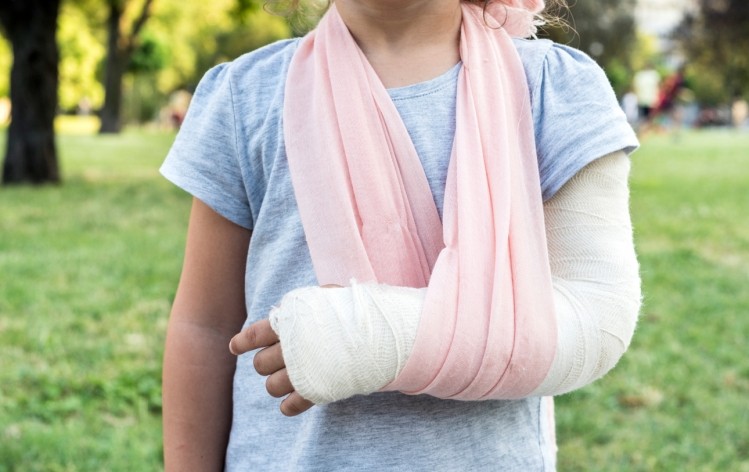K for kids: Low vitamin K2 levels may boost fracture risk

The study, presented at the International Conference on Children’s Bone Health in Würzburg, Germany, is said to be the first to evaluate both D and K2 status in healthy children with low-energy fractures (i.e., the result of falling from standing height or less) and in the control group without fractures.
“Bone fractures are very common in children and their number is growing every year. Vitamin D has a proven role in the prevention of fractures… [but the] past decade has seen increased interest in the role of Vitamin K, especially K2 menaquinone-7, in bone health and prevention of bone fractures. There is a scarcity of research examining the effects of vitamin K deficiency on bone health in children and adolescent populations,” explained the researchers in their conference abstract.
Deficiency
Kate Quackenbush, director of communications for vitamin K2 supplier NattoPharma USA, explained that the typical Western diet contains insufficient amounts of vitamin K2 to adequately activate K-dependent proteins like osteocalcin (for bone) and matrix Gla protein (MGP; for cardiovascular health), which means about 30% of vitamin K2-activated proteins remain inactive. This amount only increases with age, she added.
“Further, vitamin K2 is nearly non-existent in processed “junk” food, and even in a healthy Western diet,” said Quackenbush. “While there is no clear data specifying how many US children are deficient, it is safe to assume that most are.”
Study details
For the new study assessed the calcium, vitamin D and K status of 20 children aged 5 to 15 with clinically confirmed low-energy fractures and compared this with 19 healthy children without fractures. Vitamin D status was assessed by measuring levels of 25(OH)D3 plus 25(OH)D2, while vitamin K status was assessed by measuring the ratio of undercarboxylated (ucOC) and carboxylated osteocalcin (cOC) concentrations.
The results showed that, while there were no significant differences between the groups for vitamin D and calcium levels, a statistically significant difference in vitamin K status was observed between the groups.
Significant
Commenting on the study’s findings, Dr Hogne Vik, Chief Medical Officer with NattoPharma, said: “This is a significant study as it supports what NattoPharma’s clinical research has already revealed: that children have the most pronounced K deficiency, making them most in need for K2 supplementation.
“Further, our research with healthy pre-pubertal children has also shown that just 45mcg daily of K2 (as MenaQ7) improves K status and increases the activation of osteocalcin, the K-dependent protein responsible for binding calcium to the bone mineral matrix, therefore improving bone health.”
K for kids
Despite the health benefits of vitamin K, Quackenbush said that it has been a hard process to get the nutrient into finished products positioned for children. “But we are finally seeing products hit the market positioned for children’s health featuring Vitamin K2,” she said. “For example, at Expo West 2016 Wiley’s Finest Fish Oil introduced the first kid-specific product featuring MenaQ7 Vitamin K2 as MK-7, called Beginner’s DHA for Kids. Carlson Laboratories is also getting ready to launch a child formula featuring MenaQ7.
Chris Speed, a dietitian and nutritional scientist and VP of Sales at omega-3 brand Wileys Finest LLC., told us that industry interest in vitamin K2 is increasing. “There’s been a bit of a flurry in the industry since Expo West,” he said. “Key brands are starting to realize that the science is significant, and vitamin K2 has profound effect on bones and cardiovascular health.
“We still need to educate aggressively but it is definitely an interesting time for vitamin K2.”
Forms
There are two main forms of vitamin K: phylloquinone (vitamin K1), which is found in green leafy vegetables such as lettuce, broccoli and spinach, and makes up about 90% of the vitamin K in a typical Western diet; and menaquinones (vitamins K2), which make up about 10% of Western vitamin K consumption and can be synthesized in the gut by microflora.
Menaquinones (MK-n: with the n determined by the number of prenyl side chains) can also be found in the diet; MK-4 can be found in animal meat, MK-7, MK-8, and MK-9 are found in fermented food products like cheese, and natto is a rich source of MK-7.
The potential health benefits of the vitamin include cardiovascular and bone health, with some data also supporting a role for prostate health and cognitive benefits.

















